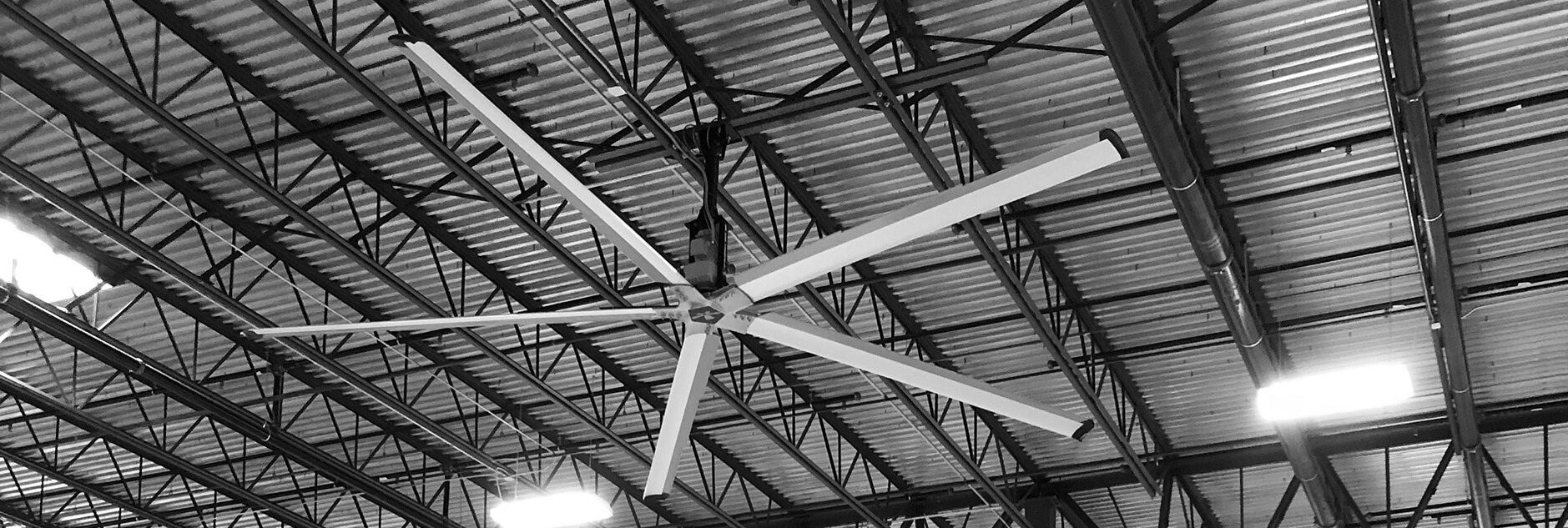Reducing Your Business Costs With Warehouse Fans


Narrow profit margins, rising energy costs, and global competition — the economic challenges facing businesses these days are stiff indeed. The most successful companies are always on the lookout for ways to improve profitability. For most, heating and cooling efficiency is a prime way to cut costs and improve the bottom line.
Warehouses are often overlooked where green efficiency is concerned. However, significant industrial energy savings can be realized when warehouse HVAC is properly assessed and optimized for energy efficiency.
Just as with other types of large industrial and commercial buildings, high volume, low speed (HVLS) fans can play a huge role in improving energy efficiency and reducing business costs in the warehouse. Here are a few reasons why.
Low Input, Big Impact
HVLS fans are an extremely cost-effective cooling efficiency solution for a large structure such as a warehouse. That’s because a single large HVLS fan like our Z-Tech model can move a huge volume of air with astonishingly little energy input. Even our largest 24 ft. Z-Tech runs on just 3 amps of power and generates 32,400 sq. ft. of cooling coverage.
While the air movement from an HVLS fan is slower than that produced by a high speed fan, a massive air movement is created throughout the space. The result is an evaporative cooling effect of up to 10 degrees with far less energy cost than conventional fans or air conditioning.
Destratification
The sheer volume of space in a warehouse presents cooling efficiency challenges. One of these is air stratification — the tendency of air in an enclosed space to separate into layers of cooler and warmer air. This can create problems year-round.
In summer, high warehouse ceilings trap a large volume of air under the roof, where it heats and can damage temperature-sensitive inventory. Conventional air conditioning does little to alleviate the problem, since the cool air tends to sink and stay near the warehouse floor. An HVLS fan works to thoroughly distribute air for more effective and efficient use of air conditioning.
In winter, an HVLS fan can seriously reduce warehouse heating bills by redirecting warm air toward the floor where it is needed to maintain worker comfort.
Lowering Maintenance Costs
Low speed means low vibration, which creates less stress on moving parts. This means HVLS fans typically last longer than high-speed fans, and can be serviced at longer intervals. In fact, our Z-Tech fan is virtually maintenance free, with a 20,000-hour inspection interval — well over two years, even if it’s running full-time. Compare that to a typical high-speed industrial fan, which must be disassembled and lubricated at least annually.
Programming for Savings
One of the biggest trends in green efficiency is building automation. Our Z-Tech and TAZ high volume, low-speed fans can be used with our state-of-the-art ABB controller to program for maximum energy efficiency. This system is fully compatible with most building automation systems.
